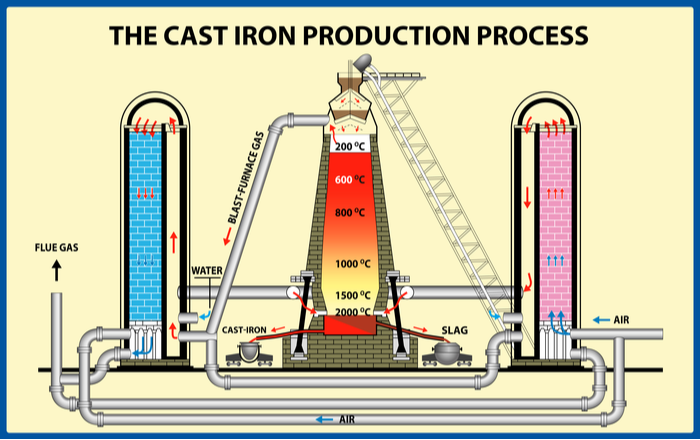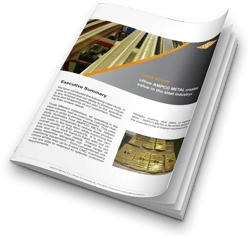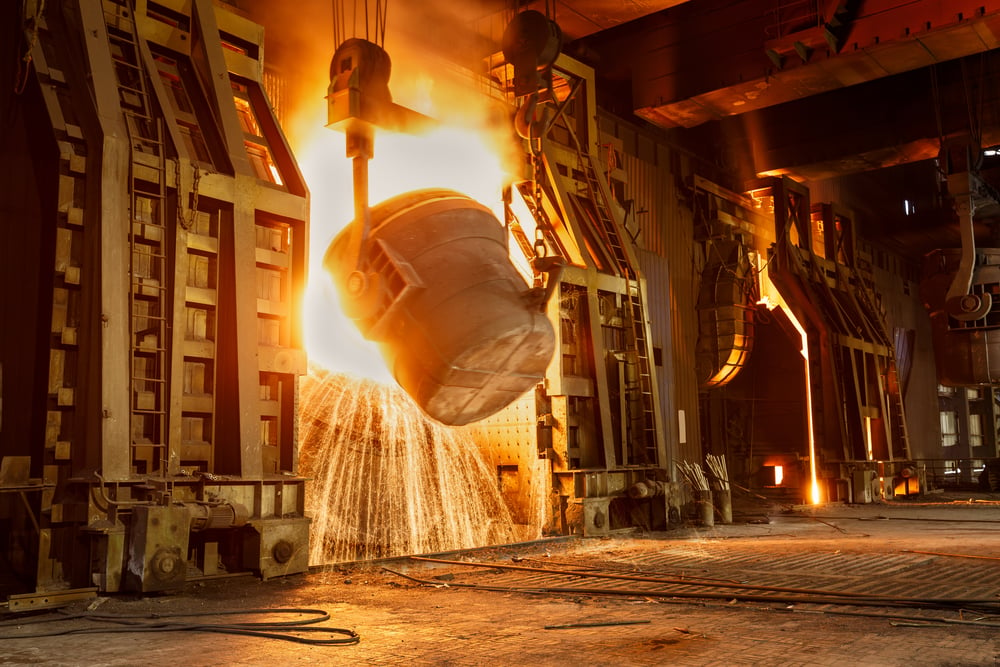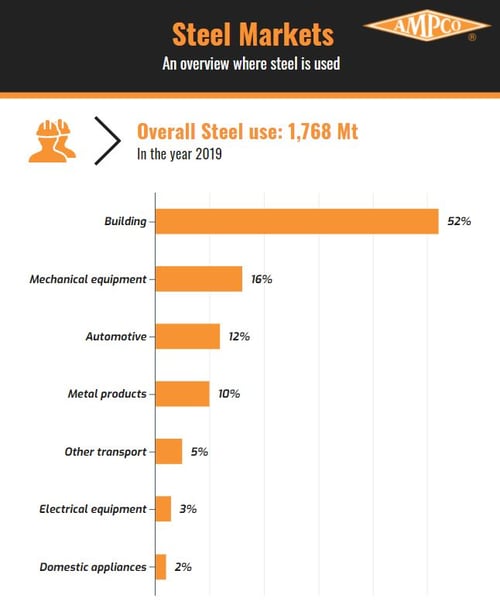Nowadays, Steel can be found everywhere. Everyday objects such as cutlery as well as entire houses structures are made of steel. But what does it actually take to produce steel? And what role does aluminum bronze play in the process of steel production?
What would a world without steel actually look like? Probably completely different. After all, it is impossible to imagine modern life without this high-tech material. In the construction industry, for example, steel ensures that buildings can be built quickly, cost-effectively, and with great flexibility. Without steel there would be no skyscrapers – the skyline of the metropolis of New York would be a lot less impressive. And although steel is by far the most used material in the construction industry, it is by no means the only area in which it is used, as the enclosed infographic shows. But what makes steel such a popular material?
A highly flexible material
All metallic alloys whose main component is iron and whose carbon content does not usually exceed 2.06 % are considered steel. Depending on the alloy used and the method of production, the technical properties of steel vary widely. The greatest strength of steel is its almost infinite flexibility. Steel has high strength and can therefore withstand a lot before it fails. Therefore, its typical properties include, in particular, high tensile strength, good formability, high durability, and – in the case of stainless steel – high corrosion resistance.
How is steel produced?
A distinction can be made between two different variants of how steel can be produced. In the blast furnace process, pig iron is produced from iron ore. For this purpose, coke - i.e. almost pure carbon - is added to the iron ore as a reducing agent. In addition, limestone is used to dissolve the pig iron from other disturbing components. Depending on the intended use, other alloying substances such as chromium, nickel, or copper are added. The iron is then separated from the ore at a temperature of around 1,500° C.

The blast furnace process results in pig iron, which still contains a lot of carbon and is therefore still very brittle. This makes it unsuitable for its later use. In a second production step, pig iron is therefore further processed into crude steel. To do this, the molten pig iron is put into a converter where the unwanted carbon is removed by adding oxygen. This results finally in crude steel.
However, steel can also be produced in an electric arc furnace. Since steel is 100 % recyclable, instead of iron ore steel scrap is processed. The molten material is heated up to 1,100° C with the help of electrical energy. Due to the higher plant costs in the electric arc process, mainly smaller units of high-alloy high quality and stainless steels are produced.
Further processing in rolling mills
After the crude steel has been produced, it is further processed in rolling mills into various products such as sheets, tubes, profiles, or wires. For this purpose, the steel ingots are brought to large industrial furnaces with the help of rollers and are then heavily heated. The steel ingots subsequently pass through a course. It is rolled in various rolling mills – a little more with each pass until it finally reaches the desired shape. Every rolling pass, no matter how small, is necessary, because if the steel block changes too much, it runs the risk of breaking.
Advantages of aluminum bronzes in the steel industry
The materials in these rolling mills have to meet the highest demands in order to withstand the forces of the steel blocks weighing several tonnes on the one hand and to withstand the high temperatures on the other. Aluminum bronzes are characterized, among other things, by their excellent wear resistance, heat resistance, and good sliding properties. Thanks to these properties, they are ideally suited to withstand the unique challenges of the steel industry.
 Picture: Sandcasted wedge sleeve made of AMPCO® 18
Picture: Sandcasted wedge sleeve made of AMPCO® 18
To meet these high demands in the steel industry, AMPCO METAL has developed high-performance special bronzes and AMPCOLOY® products. The AMPCO® alloys have up to 30 % better wear properties than conventional bronze alloys. They are also 30 - 50 % more corrosion resistant than standard bronzes, and up to 10 % more pressure resistant. Thanks to our unique know-how, we are able to produce practically any workpiece according to your specifications and drawings.
Want to learn more about how companies in the steel industry can benefit from AMPCO METAL's aluminum bronzes? Download our free case study «How AMPCO METAL creates value in the steel industry» now.






